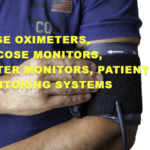Introduction
Therapeutic equipment plays a vital role in the healthcare industry, providing essential support for various medical treatments and rehabilitation processes. From hospitals to clinics and individual practices, healthcare professionals and hospital owners rely on a wide range of therapeutic equipment to improve the lives of their patients. In this blog post, we will explore the world of therapeutic equipment, its importance in delivering effective healthcare, and the various types of equipment available. Whether you are new to the concept or already familiar with therapeutic equipment, this article aims to provide insightful information that resonates with both healthcare professionals and hospital owners.
The Significance of Therapeutic Equipment
Therapeutic equipment holds immense significance in the field of healthcare. It aids in the diagnosis, treatment, and rehabilitation of patients across diverse medical conditions. Effective use of therapeutic equipment can significantly improve patient outcomes, enhance the quality of care, and expedite the recovery process. Healthcare professionals and hospital owners understand that investing in state-of-the-art therapeutic equipment is not only beneficial for patients but also for the overall success of their practice or healthcare facility. Let’s delve into some of the key types of therapeutic equipment and their applications.
1. Mobility Aids
Mobility aids are designed to assist individuals with impaired movement. They provide support, stability, and independence to patients with mobility issues, enabling them to move around safely and comfortably. Mobility aids include equipment such as wheelchairs, crutches, walkers, and canes. These devices are essential for patients with temporary injuries, disabilities, or chronic conditions affecting their ability to walk or balance properly. By utilizing mobility aids, healthcare professionals ensure that patients can maintain their mobility and actively participate in their daily activities while minimizing the risk of falls or further injuries.
2. Rehabilitation Equipment
Rehabilitation equipment plays a pivotal role in helping patients recover from injuries, surgeries, or medical conditions. It assists in restoring function, strength, and range of motion, enabling individuals to regain their independence and quality of life. Rehabilitation equipment includes items like therapy balls, resistance bands, balance boards, and electrotherapy devices. These resources allow healthcare professionals to create individualized rehabilitation plans tailored to each patient’s unique needs, enhancing their recovery process and facilitating their return to normal activities.
3. Respiratory Equipment
Respiratory equipment is crucial for patients with respiratory conditions, ensuring optimal breathing and respiratory support. This equipment assists in managing respiratory distress, improving oxygenation, and facilitating lung function. Some commonly used respiratory equipment includes oxygen concentrators, nebulizers, CPAP machines, and ventilators. By utilizing respiratory equipment, healthcare professionals can provide targeted interventions and therapies for patients with conditions like asthma, chronic obstructive pulmonary disease (COPD), or sleep apnea, alleviating symptoms and improving overall respiratory health.
4. Physiotherapy Equipment
Physiotherapy equipment encompasses a wide range of devices that aid in the management of musculoskeletal and neuromuscular conditions. These devices assist in assessing and treating physical impairments, promoting recovery, and optimizing physical function. Some examples of physiotherapy equipment include ultrasound machines, electrical stimulation devices, heat and cold therapy units, and traction tables. Integrating physiotherapy equipment into treatment plans allows healthcare professionals to deliver evidence-based interventions that address pain, improve mobility, and enhance overall physical well-being.
5. Monitoring Devices
Monitoring devices are crucial in tracking patients’ vital signs, ensuring their safety, and detecting any potential health complications. These devices allow healthcare professionals to closely monitor patients’ heart rate, blood pressure, oxygen saturation levels, and other essential parameters. Common monitoring devices include EKG machines, pulse oximeters, blood pressure monitors, and cardiac event recorders. By utilizing monitoring devices, healthcare professionals can promptly identify any deviations from normal health parameters, enabling early intervention and improving patient outcomes.
6. Wound Care Equipment
Wound care equipment is essential in managing various types of wounds, promoting healing, and preventing complications. This equipment assists in wound cleaning, dressing, and protection, providing a sterile environment for optimal healing. Some commonly utilized wound care equipment includes wound vacuums, irrigation systems, hydrocolloid dressings, and negative pressure wound therapy devices. By incorporating wound care equipment into treatment protocols, healthcare professionals can enhance the healing process, reduce the risk of infections, and improve the overall well-being of patients with acute or chronic wounds.
Conclusion
Therapeutic equipment plays a fundamental role in healthcare, supporting the diagnosis, treatment, and rehabilitation of patients across diverse medical conditions. From mobility aids to rehabilitation equipment, respiratory devices, physiotherapy tools, monitoring devices, and wound care equipment, each type of therapeutic equipment serves a unique purpose in improving patient outcomes and enhancing the quality of care. Healthcare professionals and hospital owners should consider investing in high-quality therapeutic equipment to provide the best possible care to their patients, ensuring optimal recovery and well-being. By harnessing the power of therapeutic equipment, healthcare professionals can transform lives and make a lasting difference in the field of healthcare.



